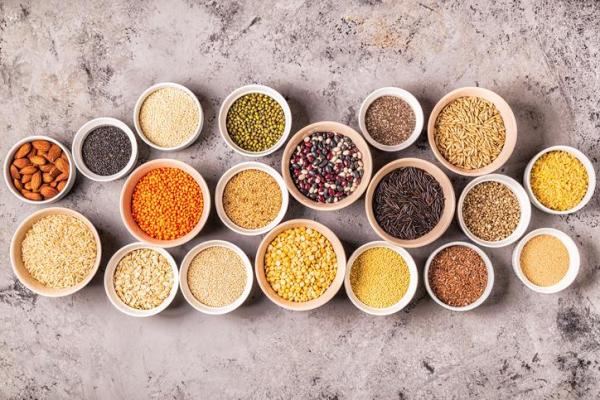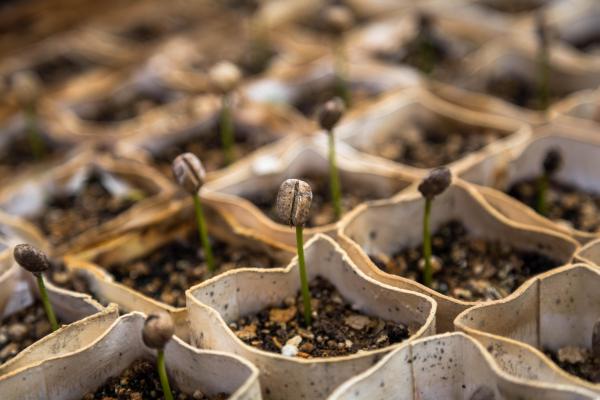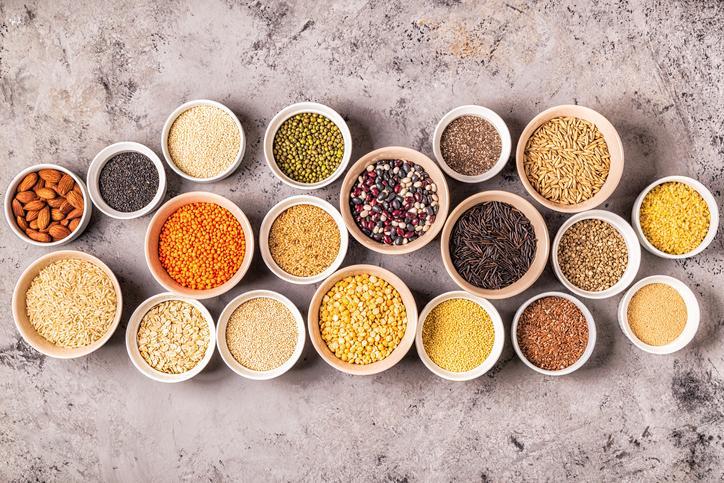What Are Seeds? - Definition and Seed Types


Seeds are remarkable and fundamental components of the plant kingdom. They serve as the means through which plants reproduce and spread their genetic material. Seeds come in a stunning array of shapes, sizes, and adaptations. Different plants have evolved seeds that are uniquely suited to their specific environments and methods of dispersal.
In the following article by thedailyECO, we explain what seeds are, their functions and the different types of seeds that exist.
What are seeds?
A seed, in more precise terms, is an integral component of flowering plants, or phanerogams. Typically nestled within the protective confines of a plant's fruit, it holds within it a dormant embryo, ready to sprout and develop into a new plant when the right conditions arise. This process, called germination, marks the beginning of a new plant.
What's intriguing about seeds is that they result from a plant's sexual reproduction. Through the processes of pollination and fertilization, genetic information from two parent plants combines to create a unique genetic makeup within the embryo. This genetic diversity contributes to the adaptation and evolution of plant species.
Yet, a seed isn't merely an embryo. It also functions as a self-contained nutrition source. Within its protective shell, the seed stores essential nutrients that provide sustenance for the emerging seedling until it can establish itself and start photosynthesis.

Seed function
Seeds serve a vital role in plants, comparable to the function of eggs in oviparous animals. Both structures are indispensable for perpetuating their respective species, safeguarding and nurturing the developing embryo until it matures into a new individual.
However, there's a stark contrast between plants and animals. Plants are generally immobile and lack many of the innate abilities that animals have, such as the ability to move actively in search of resources or respond quickly to environmental changes. Consequently, plants have evolved ingenious mechanisms to conquer new territories, with seeds being one of their most triumphant adaptations in the relentless quest for survival.
Seeds are typically found encased within fruits. When these fruits fall to the ground or are consumed by animals, seeds are dispersed, thanks to natural agents like wind or the actions of creatures. Notably, many seeds can still sprout even after passing through an animal's digestive system, aiding their dispersal across distant lands from their parent plants.
What adds to the fascination of seeds is their ability to postpone germination until conditions become favorable. If a seed happens to land in an environment with unfavorable temperature or humidity, it patiently waits until conditions become more suitable.
This ability allows many seeds to endure prolonged periods in a dormant state, shielded by their protective outer layers until the ideal moment for germination arises. This seemingly minor yet critical distinction significantly enhances the likelihood of success for the future plant.
While there exists a multitude of seed types, each employing unique strategies for efficient propagation, their overarching objective remains unaltered: ensuring the survival and proliferation of their plant species.
Spermatophyte plants is a term used to describe plants that reproduce and develop from seeds. These plants are categorized into two main groups: angiosperms and gymnosperms. If you'd like to delve deeper into understanding the differences between these two groups and their key characteristics, you can find more information in this other article.
Parts of the seed
While seeds may appear externally compact and uniform, they actually consist of several distinct internal parts, each serving a crucial role in the plant's development:
Embryo
Similar to animals, the embryo is the tiny plant within the seed, awaiting the right conditions to germinate. It comprises four main parts:
- Radicle: this is the embryo's initial root, giving rise to all other roots of the future plant.
- Plumule: located at the end opposite the radicle, the plumule is a bud that will develop into the plant's shoot.
- Hypocotyl: the region between the radicle and plumule, which will eventually form the stem.
- Cotyledon: depending on whether the plant is monocot or dicot, there can be one or two cotyledons. These are the first leaves of the plant, serving a unique role in early growth.
Endosperm
Occupying the majority of the seed's volume, the endosperm acts as a nutrient reserve for the embryo during its initial stages of growth. Typically rich in starch, it provides sustenance for the developing plant.
Episperm
This outer layer, often hard, serves to protect the embryo and endosperm from predators and external threats.
These intricate seed components work in harmony to ensure the successful germination and early growth of the plant.
To gain a better understanding of the different parts that make up a flower, we encourage you to read our additional article, where we delve into the concept of the perianth and its essential functions.

Seed types
Seeds can be classified in various ways, primarily based on different criteria, such as their origin, function, or specific characteristics. Here are some common classifications of seeds:
Based on their origin
- Wild seeds: these are seeds from plants that grow naturally in their native habitats without human intervention.
- Cultivated seeds: these seeds are from plants that have been intentionally grown and managed by humans for agricultural or horticultural purposes.
Based on their function
- Crop seeds: seeds of plants cultivated for human consumption, animal feed, or industrial purposes, such as grains (wheat, rice), pulses (beans, lentils), and oilseeds (soybeans, sunflower).
- Ornamental seeds: seeds from plants grown for decorative purposes, including flowers and ornamental trees.
- Cover crop seeds: seeds of specific plant species used to cover and protect soil, improve fertility, and prevent erosion.
- Green manure seeds: seeds of plants grown to add nutrients to the soil when they are plowed under, improving soil quality.
Based on reproduction
- Open-pollinated seeds: these seeds result from natural pollination, often leading to genetic diversity within a plant species.
- Hybrid seeds: seeds produced by crossbreeding two different plant varieties or species, resulting in specific desirable traits. Hybrids may exhibit uniformity and vigor.
These classifications help categorize seeds for various purposes, from agriculture and horticulture to ecological studies and conservation efforts.
To discover more about the fascinating world of animal pollinators and explore which animals play a crucial role in pollination, we invite you to read our other article.
If you want to read similar articles to What Are Seeds? - Definition and Seed Types, we recommend you visit our Biology category.







